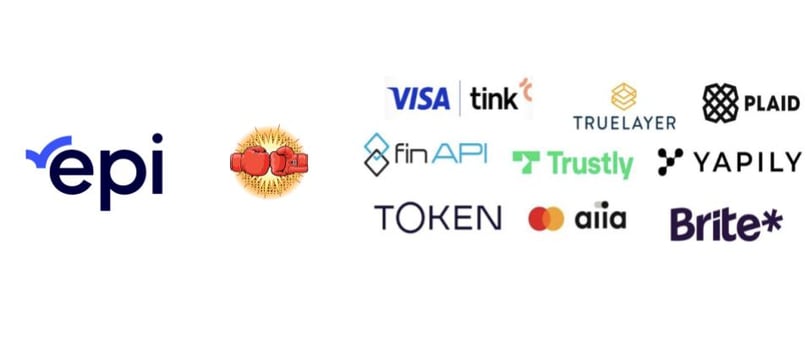European Payments Initiative
Friend or Foe to Classic A2A
8/7/20243 min read


The European Payments Initiative (EPI) is set to transform the payments landscape, potentially sending shockwaves through the Account-to-Account (A2A) payment industry.
As this ambitious pan-European project gains momentum, established players like Trustly and Tink may find themselves at a crossroads. With its promise of a unified payment solution across the continent, EPI could reshape market dynamics, forcing A2A companies to adapt or risk obsolescence.
This seismic shift in the payments ecosystem raises intriguing questions about competition, innovation, and the future of European financial transactions.
As we delve into the potential impacts, we'll uncover the challenges and opportunities for EPI and the A2A payment giants that have long dominated the field.
Positive Impacts
1. Enhanced Market Reach
EPI aims to create a unified, pan-European payment solution leveraging the SEPA Instant Credit Transfer (SCT Inst) scheme, which can extend the reach of A2A payments across Europe.
A small business in France can now instantly receive payments from customers in Germany without worrying about cross-border transaction delays or additional fees. This seamless integration boosts the efficiency of A2A payments, making them more attractive to both consumers and businesses.
Example: Trustly, which already facilitates cross-border A2A payments, could benefit from the broader acceptance and standardization of EPI. This could make it easier for Trustly to integrate its services across different European markets without dealing with the complexities of varying national payment systems.
2. Increased Adoption of Instant Payments
By introducing Wero, a digital wallet that supports instant A2A payments, EPI encourages the adoption of digital payment methods over traditional cash transactions. This innovation aligns with the growing trend towards digitalization and open banking.
Example: Brite Payments can leverage the infrastructure and increase consumer familiarity with instant payments to enhance its service offerings. For instance, Brite could integrate with Wero to provide instant payment options to its users, thereby improving transaction speeds and customer satisfaction.
3. Competitive Innovation
EPI’s introduction of innovative features, such as digital identity verification and merchant loyalty program integration, could drive overall market innovation.
EPI aims to create a competitive payment landscape by offering a unified solution that can compete with major international players. This competition can drive improvements in service quality and cost-effectiveness for A2A payments.
Example: Tink could adopt similar innovations to stay competitive. For instance, integrating digital identity verification could streamline the user onboarding process, enhancing security and user experience.
Negative Impacts
1. Increased Competition
EPI aims to become the new payment standard in Europe, which could intensify competition for existing A2A payment providers.
Introducing a new, pan-European payment system may disrupt existing national A2A payment systems, leading to a period of adjustment and potential resistance from stakeholders accustomed to current methods.
Example: Truelayer might face increased competition from EPI’s Wero wallet, which offers a comprehensive payment solution for various use cases, including peer-to-peer, point-of-sale, and online payments. To maintain its market position, Truelayer will need to differentiate its services.
2. Potential Market Fragmentation
While EPI aims to unify the payment landscape, there is a risk that it could create fragmentation if not all banks and payment providers adopt the system uniformly.
Example: If Trustly’s partner banks do not adopt EPI, Trustly might face challenges in maintaining seamless service across different regions. This could lead to inconsistencies in payment processing and user experience.
3. Integration and Compliance Costs
Adapting to the new EPI standards and integrating with its platform could incur significant costs for existing A2A payment providers.
Integrating EPI’s new platform with existing banking systems and ensuring compatibility across different countries and banks can be complex and resource-intensive.
Example: Brite Payments might need to update its technology infrastructure to comply with EPI’s requirements. This could involve substantial financial and resource commitments, potentially impacting profitability in the short term.
But not so fast; it seems like we've seen this movie before. Stay tuned for part two next week.
CONTACT US
contact@quarenta.se


